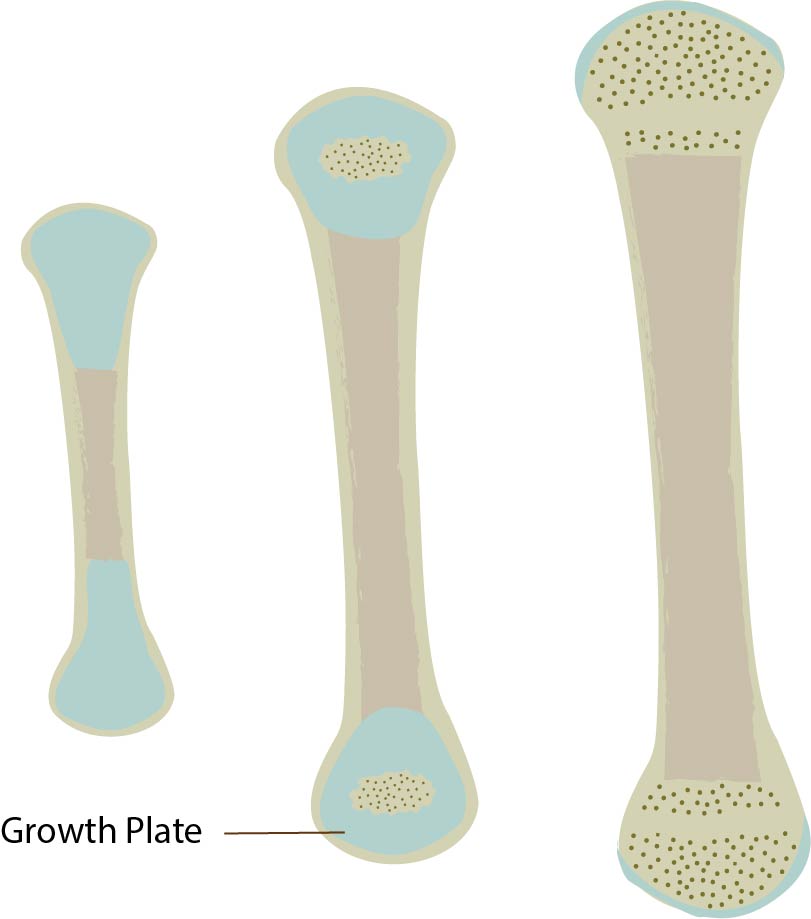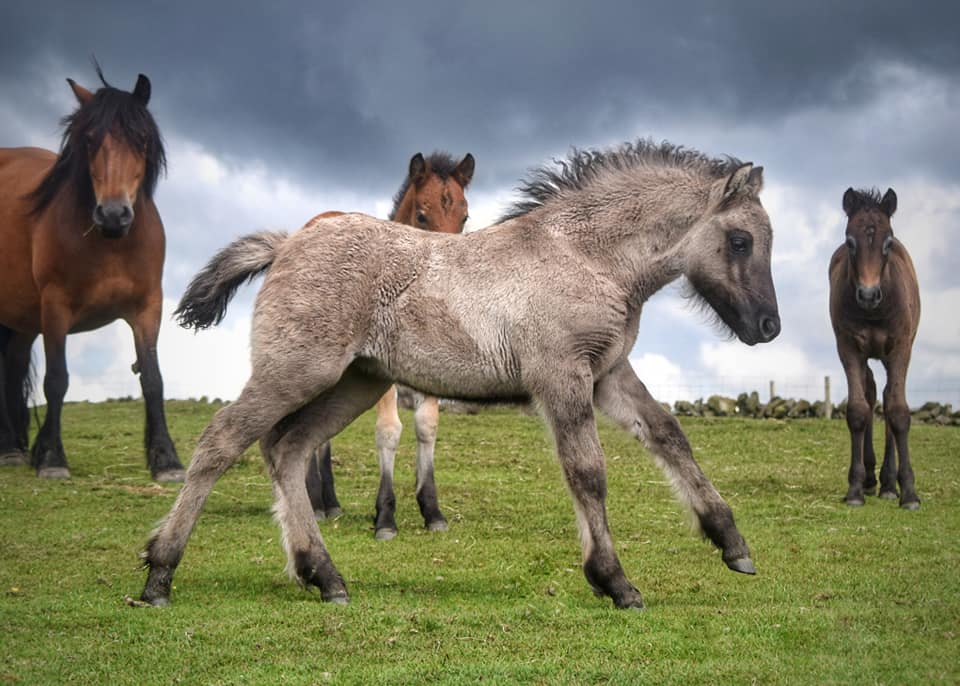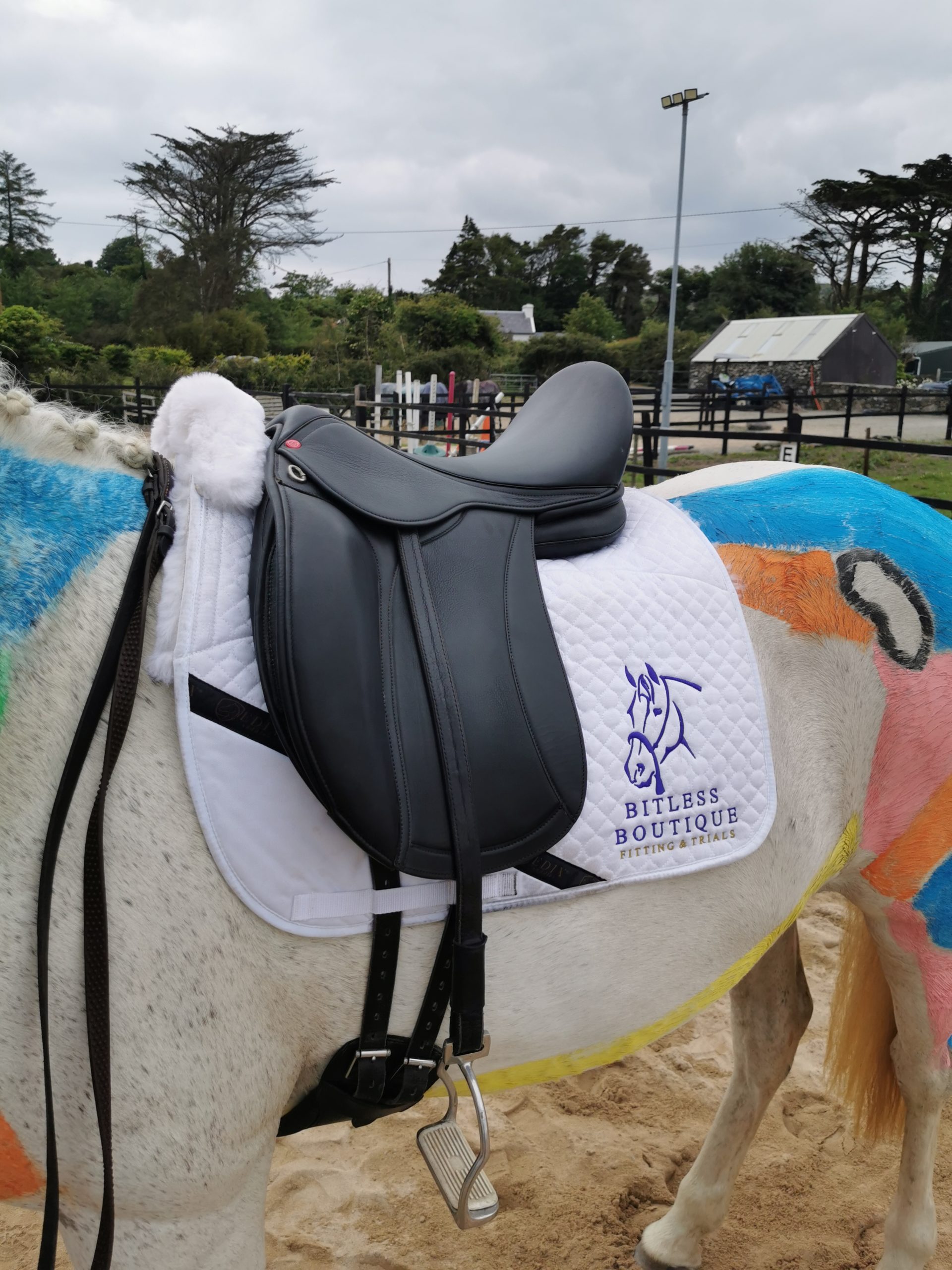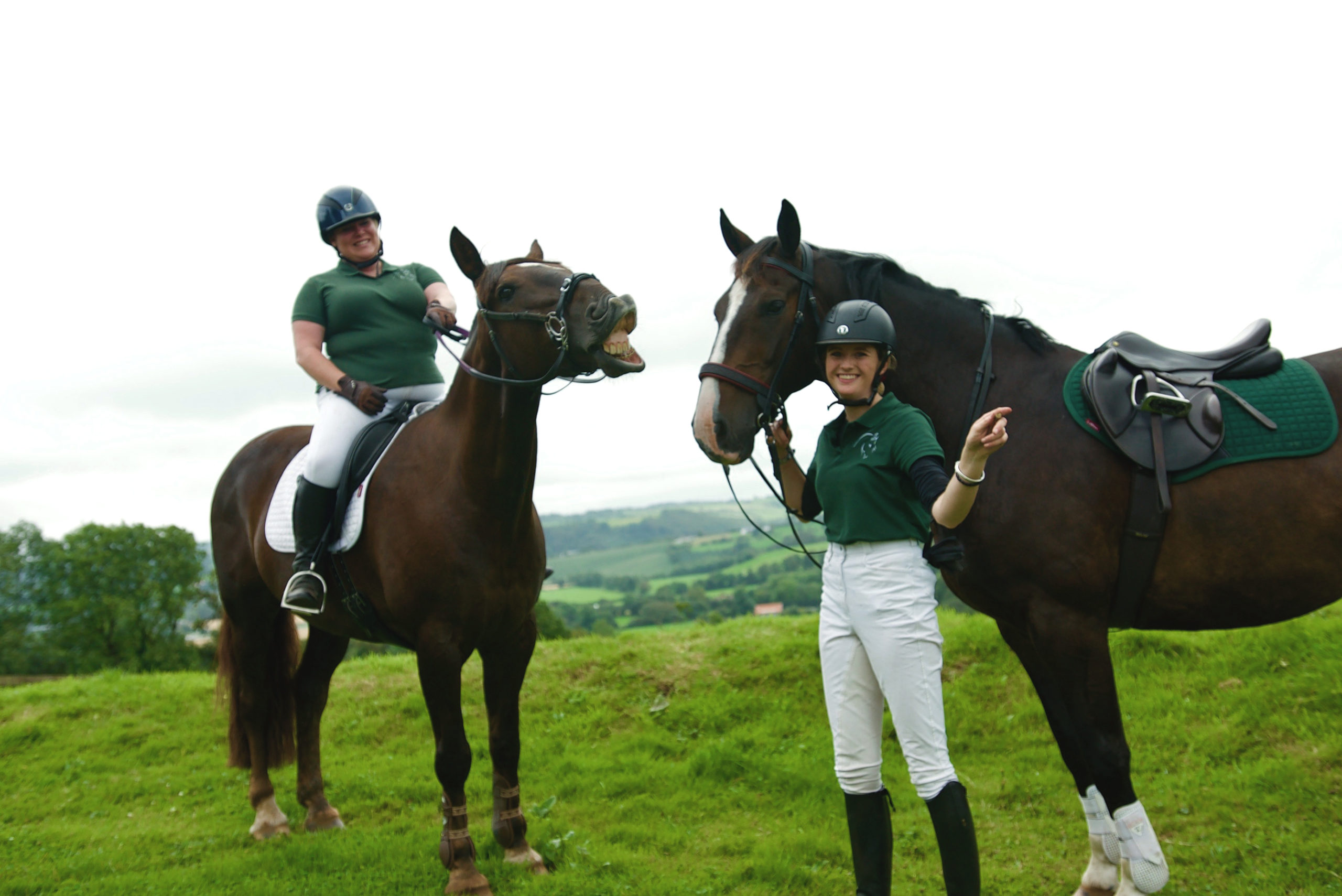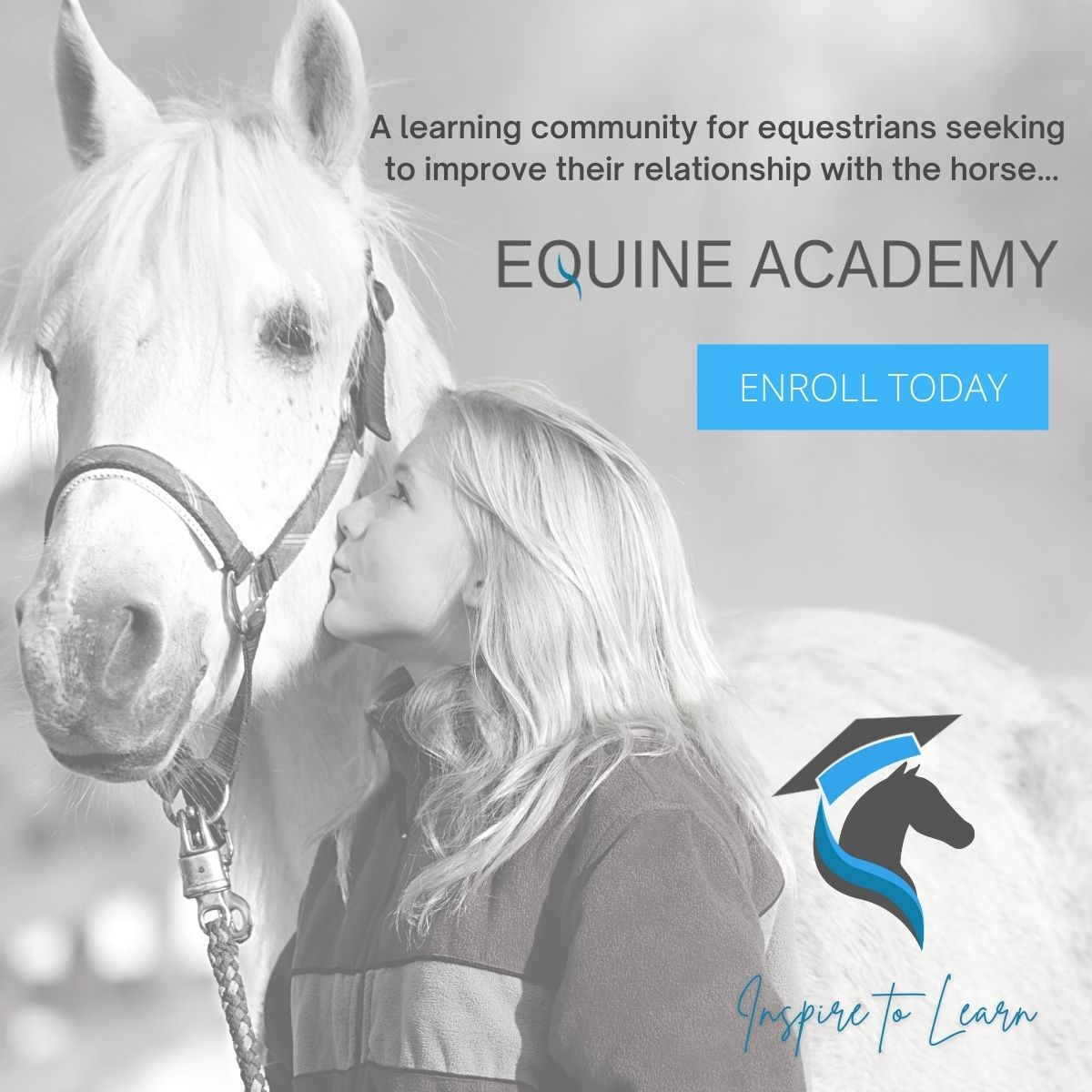This original article was originally published in 2020 in Horsemanship Journal by Phillippa Christie
Historically, traditional horsemanship has not taken the information available on physical and emotional development into account for the basis of age-appropriate training. There is a great deal of new scientific findings available which radically shake up what we believed about training horses. While some of the horse world is still playing catch-up, the knowledge of skeletal development in relation to training, nutrition and management requires a revolution in training for every single horse. This article explores the ages at which we should train our horses how we can train them, and how these play key roles in performance and longevity of physical and mental health.
The Science
A horse’s physical body develops at various stages. Being a prey animal, a horse must be ready to run from birth. This capability can give the impression quite early on in a horse’s development that they are ready for more training at far below the age of their skeletal maturity. For example, some training practices are riding horses from as young as 18 months and competing from 2 years of age. However, what we see on the outside, doesn’t always match up to what is going on inside.
A research paper by Dr Deb Bennett on the closure of growth plates evidenced that horses may not fully mature until over 6 years of age, even older for large warmblood and draft horses.
Growth Plates
The growth plates are located within the bone. Bone development begins as cartilage and goes through a process called ossification. This means that the softer cartilage is replaced by bone. In the middle diagram, you can see there is a blue area called the Growth Plate this plate is cartilage. In the final stage of development, the cartilage is replaced by bone and fuses to become a seal. Once sealed, the bone is strong and said to be developed.
It is important to know the various ages of different bone development so that in training we do not place weight or overbear on the not-yet-stable growth plates. Knowing at what age different bones develop (even in approximation) indicates the level of training our horses can potentially manage while avoiding or reducing the likeliness of damage and/or deformation to the bones. This damage can lead to dysfunction, arthritis and a host of other related conditions that may not be seen until later in life, such as kissing spines. While a trainer may claim that they have ‘broken’ (I prefer the term ‘Started’) a young horse at the age of approx. 2 years without any issues in later life, without proper screening it is not possible to definitively state this. Horses are excellent at hiding discomfort and not all trainers may pick up on the behaviour aspects that pain can present.

Some growth plates may fuse before full maturation of the bone, for example, a bone may fuse at one end, but carry on growing and take 1-2 years before plates on both ends are developed. This happens most notably with the pedal bone; the lowest-placed bone in the body and closest to the ground. The Pedal bone (also named the Coffin bone, the 3rd Phalanx or P3) growth plate fuses at birth as to allow weight bearing and movement of the coffin joint. However other research brings to light that the development of this bone may not be complete until approximately 5 years of age. The bone does not increase in height, but rather in diameter. This is an important factor to consider when we are both training and seeking appropriate hoof care for the horse until the age of development.
Birth – 6 Months
At birth, the only fused area of bone is the Coffin Joint, located between the Pedal (or Coffin) bone and the Short Pastern. Other areas of both these bones have not completed development. The Short Pastern and one end of the Long Pastern will develop fully at 6-12 months. To gain more insight into the training and weaning of foals, I consulted with experienced breeder Carolyn Ashcroft from Heald Town Pony Stud.
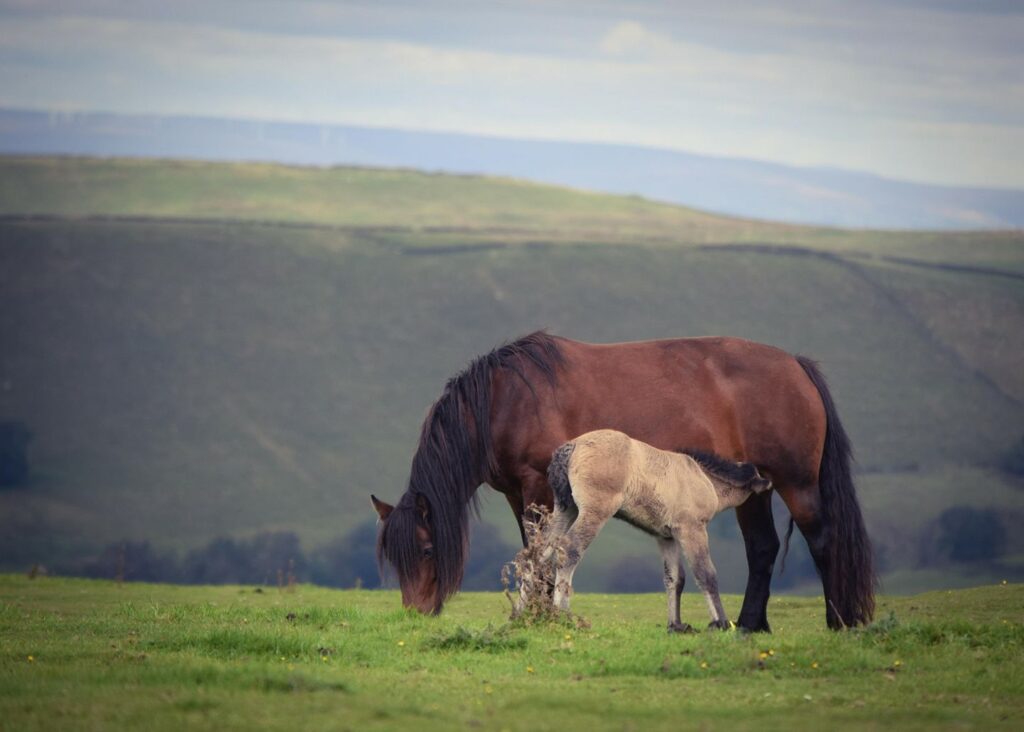
Imprinting
At birth, the foal should be left alone with the mare to imprint. Imprinting is where the foal recognises the parent and happens just after the foal is born. Carolyn says “During this time is important that the foal has time to bond with the parent. In this critical early phase, the less interaction the better! “
Except for in the circumstances of medical attention, any interface with the foal should be minimised to avoid the foal accidentally imprinting on to the human. “This [interference] could confuse the foal” Carolyn explains.
First Interactions
Up to 4 months old, observation with interactions initiated by the herd is what Carolyn recommends. “I love to observe my horses for hours each day, making sure the mares are taking care of the foals, that everyone is well and playing. I don’t go to them; I wait for the mare to bring or allow the foal to interact with me. Sometimes the mare will round up the foal if they come to close and that’s fine. It’s important that we don’t humanise the foals too early as that can lead to other problems such as over playfulness with humans that could cause injury”.
In these precious first months, many significant events are likely to occur; weaning, microchipping (legally required), hoof trimming, worming and vaccinations. To prepare a foal for these life events and keep stress to a minimum there are plenty of positive strategies we can use.
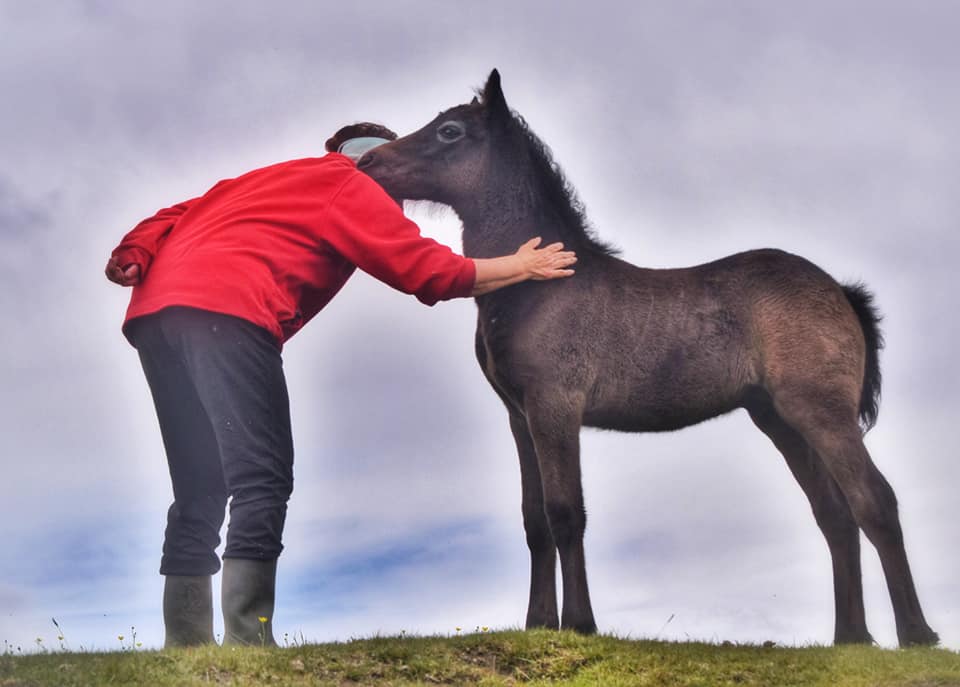
Early Management
The Heald Town approach is that each foal is treated individually. Carolyn tells me “At approx. 4 months, the foals usually follow their dam down to the stables where they will remain together to be wormed. Gently a rope will be carefully introduced to the foal, showing them first on their dam. Before moving on to the foal, allowing them to sniff and feel the rope against their hair and rub down their neck and a little around the face if they aren’t anxious. It is also the first time the foals will experience a small taste of concentrate feed. Foals return to the field with the mare.”
Training Tips
Foals learn by association (meaning from watching their dam). A quiet temperament and well-handled mare can have a positive impact on a foal’s behaviour, essentially setting a good example. Therefore, it is important to meet the mare of any foal you are either to purchase or breed from. Personality traits can be both inherited and learned.
Spend time re-checking basic management training with the dam before or during the pregnancy. Positive associated learning comes from watching a relaxed mare being handled in a gentle way, showing the foal there is no reason to be fearful.
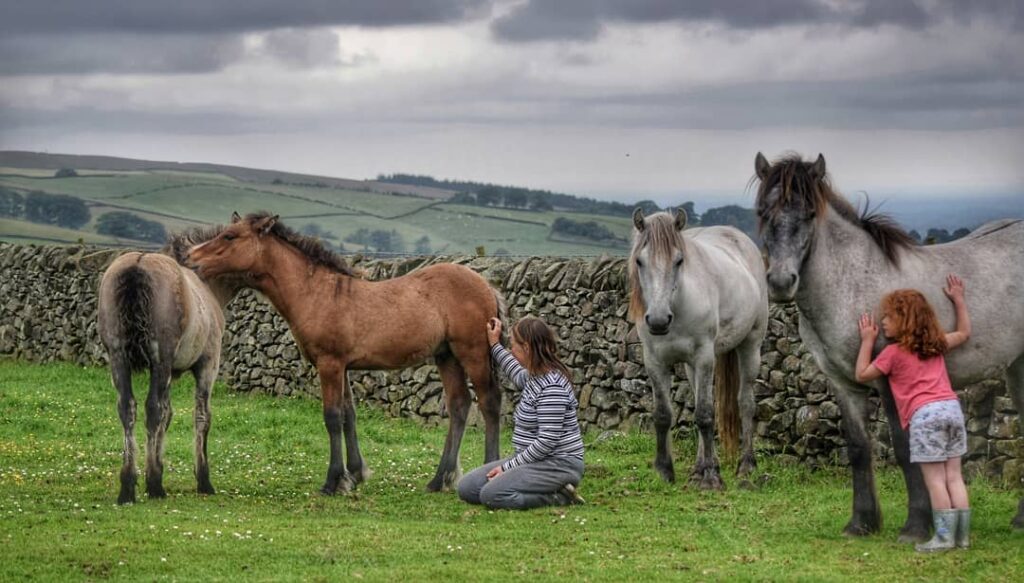
Nutrition & Growth Rates
Nutrition plays a key role in the development of bone. Rapid growth caused by overfeeding (particularly high energy) of young horses, in this case foals 3 – 9 months, has been linked to developmental orthopaedic disease (DOD).
DOD is essentially the term used to describe growth disturbances in growing horses, which could result in bone malformation or other serious conditions. Avoiding over-feeding of the lactating mare and adequate turnout with a good choice of high-fibre forage all play a key role in supporting a balanced and nutritious diet and avoiding growth spurts which could be harmful.
Feeding Tips
Keep foals outside as much as possible, and avoid stabling for long periods wherever possible. Add meadow hay to the pasture and check there is access to a variety of nutritious horse-safe plants, shrubs and trees for the dam to self-select and pass this learning to her offspring.
6 – 12 Months (Yearlings)
Between 6 – 12 months of age the Short Pastern completes plate closure; however, the Long Pastern may not be fully closed until 13-15 months. At this age, yearlings can be handled for short periods of time.
Management Training
Tasks such as haltering, leading to and from the field, picking up feet, and grooming.
Emotional Learning
In the herd, socialising with other youngsters allows the foal to develop play and form bonds. Horses which feel safe and can move to and from the herd helps avoid herd-bound behaviours in later life.
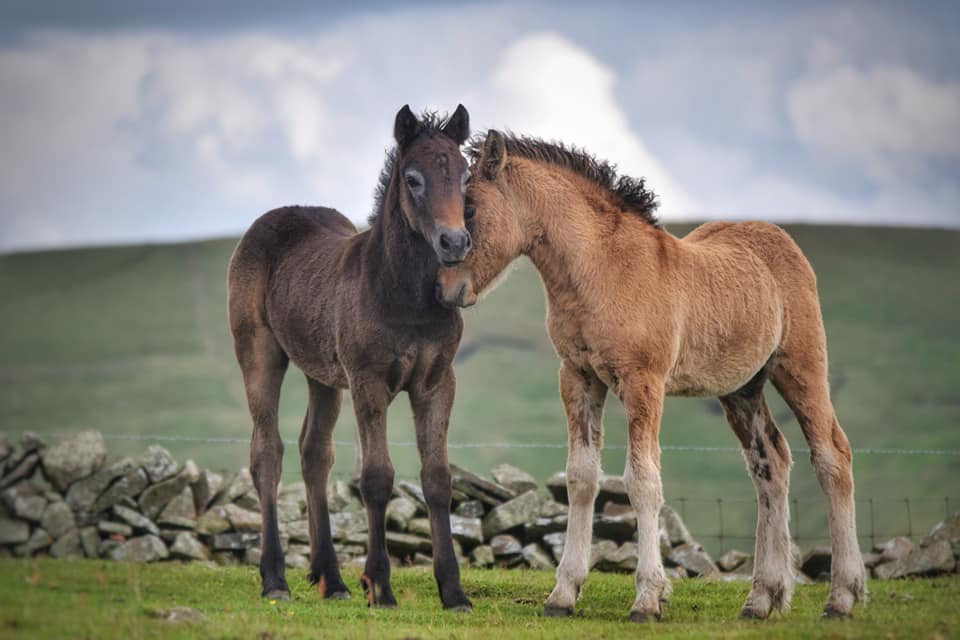
Weaning
Carolyn stresses that weaning when they are ready (which could be up to 12 months) and never before 6 months of age is of great importance. Research suggests that horses weaned before they are ready, are more prone to anxious behaviour and stereotypies in the future such as crib biting. It’s important that when you are looking to purchase a foal, that they have had the best start possible in both associated learning, diet, management and weaning.
Carolyn’s Weaning Tip
Avoid weaning a foal alone, being weaned alongside a field mate will allow both foals and dams to have a friend during the separation to help them feel safe. Being in a breeding herd is of real benefit here.
Cognitive Learning
Add a few new items around the field while you are present (do not leave them unattended). Items such as a plastic bag tied to a further off area of the fence or a box of hay with a few healthy treats hidden away. Supporting your yearling to investigate and learn they will not come to harm through curious learning will reduce fear responses and forge a positive association for future experiences. Sometimes referred to as a ‘brave’ horse.
Training Tips
Allow foals to investigate at their own pace. Introduce the items while they are in the field surrounded by herd mates. Don’t force them to approach and remove/replace the items in different areas each time. This allows the yearling to habituate, a gentle form of desensitisation.
18-24 Months (Young Stock)
Finally, at 18 months the Cannon and splint bones are developed and at 24mths the small knee bone’s growth plates are fused.
Physical & Emotional Training
Short walks on the lead down quiet lanes, with an older and confident horse. Remember horses learn by association, so horses that work alongside your youngster should display a calm and quiet temperament.
This is a great way to teach your young horse to leave the herd with a trusted member and to spend time foraging and exploring different environments.
Cognitive Learning
Sensory training such as a bridge, tarp, a ribbon door or the pool noodle ‘car wash’, is a perfect way to introduce your youngster to obstacles that they may meet out on a hack. The bridge helps with hollow sounds and preparation for trailering, the tarp with plastics and rustling, the ribbon low branches and the car wash with branches that may brush up against them. How you introduce these obstacles is greatly important. Time and positive reinforcement are my recommendations.

My Training Tip
Demonstrate a positive association with a well-trained horse over the obstacle first. Reward good behaviour with positive reinforcement as a force free and pain free method. Young horses respond well to wither scratches, helping them to relax and enjoy the experience.
36 Months – 4.5 Years
At the age of 3 years most trainers would back their horses and then turn away for the horse to develop. Increasingly the ‘traditional’ way of thinking here isn’t too far from the truth, but if we could leave all backing work until the horse is 5-6 years of age this would allow for further development of the pelvis and spine.
At 4 years old, there are large bones such as the femur, patella and scapular that are just on the cusp of development. At this age, many riding horses are beginning groundwork training. The groundwork training would best avoid tight turns or repeated lateral movements. Straight line, long lining, hand walking and confidence work would better suit your horse’s developmental stage.
Emotional Training
Preparing the horse to be able to leave the herd without becoming anxious, trailering, leading, grooming, and trimming are all important parts of training that can be overlooked. Teach directional and voice cues on the ground.
Make sure your horse is familiar with traffic, and take them out with older more confident horses. Cars, bikes and tractors could also be introduced at a distance while your horse is at pasture. Don’t forget to introduce prams, bikes and buggies!
Physical Training
Short and infrequent periods lunging in large circles without training aids, regular long-lining and pole work combined are a great way to help your horse’s muscles develop. Note that working your horse in a circle on the lunge could be more difficult for them, working straight has many benefits so be prepared to take some long-lining lessons to teach gaits and cues.
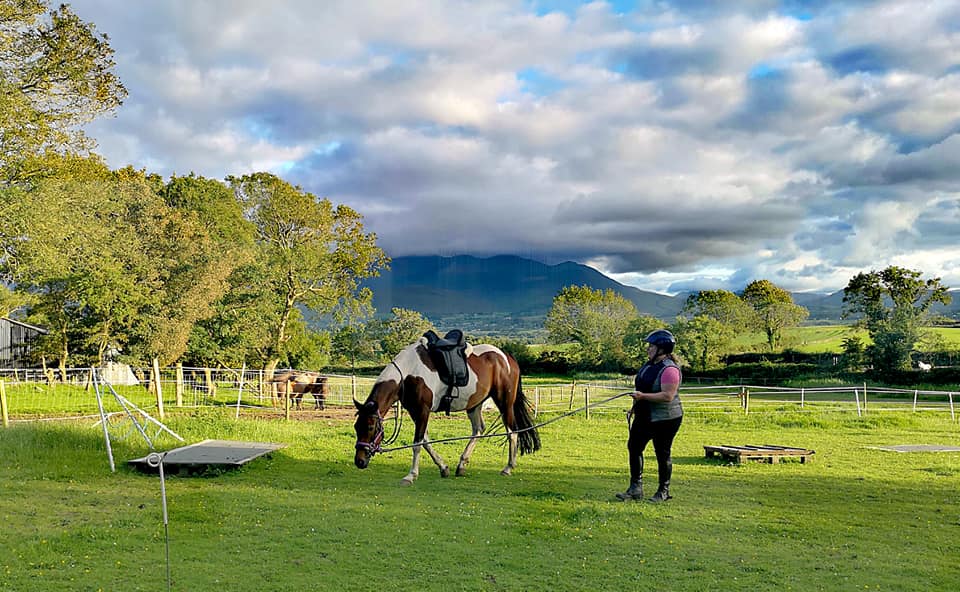
You want to prepare the horse for the day when they will be saddled, so working though those core muscles, lifting the back and developing the important longissimus muscle. Encourage lots of stretch work, positive interaction and plenty of time for play, being turned out in company.
Introduce tack such as the saddle and bridle, you may not be riding but your horse needs time to habituate to the feel and restrictions of these items. If you’re using a bitless bridle, then a simple Sidepull will simulate much of what you have done previously with your halter/cavesson/headcollar.
Standing above the horse in training, teaching mounting cues, that you may not board, but you lean across and scratch, making this a positive interaction. This time that you have ensures there is no reason to rush this process.
5– 6 Years
Now the horse’s jaw, atlas and pelvis are developed, and the pedal bone is fully formed, your horse is ready to begin more complex groundwork.
Physical Training
Alternating in-hand work, ponying on rides out and slowly extending the length and complexity of the trails, will ensure your horse has a range of learning experiences. Your horse may also benefit from driving work to build fitness.
Emotional Training
If the horse has had the correct confidence training, you should have little to no trouble getting out and about. Make sure your horse isn’t having any separation anxiety issues. Working with the issue now before the horse is being ridden will help you further down the line.
Look to engage in hand or liberty obstacle training. Joining an agility club is a great way to work up through the levels and develop your horse’s emotional responses to obstacles.

Backing
Between the ages of 5 and 6 are when most of the growth plates in the spine are finally developed. You may wish to have your horse x-rayed to confirm that the spinal portion is fully developed. The larger the horse, the higher this age may be, which is something to consider.
6-7 Years
With the Thoracic (T10-T18), Lumbar(L1-L6), Sacral (S1-S5) and Coccygeal vertebrae growth plates fully developed and (assuming the work has been carried out) the correct back muscles are built the horse is physically ready to carry a rider.
Tips for Introducing a Rider
Some horses may be spooked by the presence of the rider, so it is worth working with someone who is knowledgeable and confident to back horses or try a weighted riding dummy. If you don’t have a dummy, you could attach old wellies to the saddle to simulate the rider’s legs and optionally gradually add some weight in the boots.
Whichever method you choose to you introduce the rider take your time and keep within your horse’s stress threshold.
- Introduce rider aids slowly and positively.
- Remember the jockey should be within the appropriate weight limits for the horse.
- Make sure that the saddle is properly checked and fitted correctly before the rider boards.
Beginning their ridden career, start your horse through gentle transitioning training from the ground to the saddle. All of the fantastic work you did on the ground now needs translating. If you have taught your horse verbal cues, this will be very useful in now pairing with leg and rein directional cues. Lots of time and patience will ensure your good work is carried forward.
The horse’s Thoracic (1-9) portion of the spine and Atlas (C1) are most likely not yet fully developed. These are of importance because work involving head carriage and strain from sports such as jumping, and dressage could place strain on these areas. It would be better to avoid this complex training until these final areas are fully developed. Instead, focus on establishing a solid basis of lightness and soft rider communication.
Enjoy hacks, building up the time and complexity of your trails.
7+ Years
7 and upwards is the optimum time to further training in a discipline such as dressage or jumping, feeling assured that your horse has not been rushed, has the correct experience and confidence and is fully developed to take you both forward as a healthy partnership in mind and body.

*****
Note that the ages mentioned within are approximated for the purposes of this article, as there are differentiations noted in height and build, affecting growth plate closure times and skeletal maturation.
References for this article are too numerous to list and are available on request.
Photos published with credit to Heald Town Pony Stud and Phillippa Christie and are not to be published without consent.
*****

